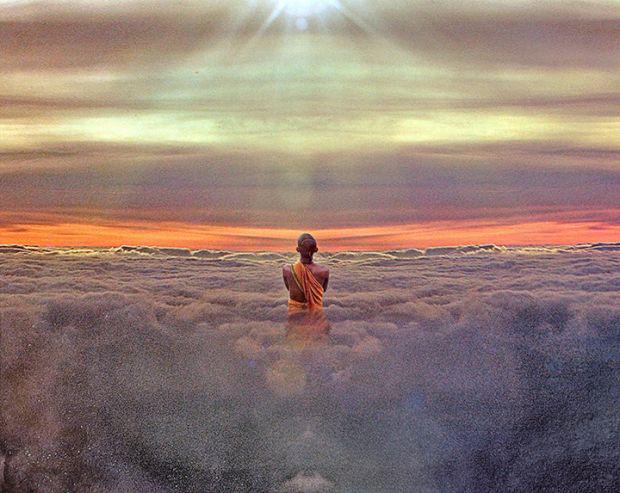In times of difficulty, stress or nervousness, we often hear a very familiar phrase from another caring soul, “Just Breathe.” But what does that even mean? Aren't we breathing 20,000 times a day already?
Our bodies record the stories that play out during our lives. Our breathing patterns shed light on the parenthesis between the phrases -- elucidating insights about our state of being and doing-- as one moment unfolds into the next ...
Many mind + body practices highlight breath as a vital tool for changing the mental and emotional state of the practitioner. Whether for meditational purposes, deepening experiences in energy work or to access mindfulness in movement, the breath encircles the details in waves of expansion and contraction. For example, Pranayama or breath regulation is one of the eight limbs in the Yoga Sutras as well as one of the six pillars in the Pilates philosophy of movement. In Tai chi, and martial arts, the breath flows in precise coordination with the exercises to connect the subtle layers of the anatomy with the physical and mental bodies. Across many different domains, the breath emerges as a liaison between worlds.
The question then arises, how do we breathe? The phrase “breathe deeply” is a common expression that  opens the gate to even more questions. In recent years, there has been much study in neuroscience proving the health benefits of high arterial counts of carbon dioxide in the blood stream which signifies the necessity of learning how to slow the rate of breathing down instead of futilely gulping massive amounts of oxygen in large quantities. Quality over quantity is an appropriate slogan when venturing into taming the breath for sure.
opens the gate to even more questions. In recent years, there has been much study in neuroscience proving the health benefits of high arterial counts of carbon dioxide in the blood stream which signifies the necessity of learning how to slow the rate of breathing down instead of futilely gulping massive amounts of oxygen in large quantities. Quality over quantity is an appropriate slogan when venturing into taming the breath for sure.
More specifically, the nose is like a portal into the hypothalamus and is directly linked with the olfactory glands in the brain, giving breath a significant role in affecting the limbic system. While the pituitary gland is like a command center, the limbic system can be portrayed as a fleet of generals that directly influence the endocrine system and autonomic nervous system. This complex system supports important functions like emotion, behavior, motivation, long-term memory and olfaction. If the nose is a direct canal into this system, then we can use the sense of smell and breathing in a more purposeful fashion to aid us during worrisome times.
In a broader sense, if we allegorize the span of a human life as one complete inhale and exhale, birth would start with the beginning of the inhale, while middle age would represent the fullness of the inhale; the start of the exhale would then carry the individual towards death, and the emptiness after the exhale can be most depicted as a state of limbo before another birth takes place. In the yogic tradition and in Buddhism, the belief of reincarnation says that the soul is deathless and that impermanence and perpetual change is the only constant in this universe. If we can buy into the micro-macro relationship between the manifestation of souls living in human form as individual expressions of divine cosmic source, then we can learn to trust in the limbo state of emptiness. We can then evolve our linear way of thinking into a more cyclical process that very much operates in a realm where the sole unifying factor is that the nature of all things is ephemeral. As we breathe in, we inspire -- we become full. As we breathe out, we expire -- we become empty. Somewhere in the space between fullness and emptiness, rests the vastness and potential of our existence.
By anchoring the thoughts on the breath and making it slow and steady, lingering in the limbo states between, the fullness of the inhale and the emptiness of the exhale, we start deeply B.R.E.A.T.H.E (B.ringing R.enewed E.nergy A.round T.he H.idden E.ntrails) and resuscitate tired limbs and organs. Not only are the physical benefits of breathing slowly creating a pathway for the mental benefits, but the breath becomes like a bridge “which connects life to consciousness,” says Thich Nhat Hanh. And it is in these limbo states of not inhaling nor exhaling that new dimensions of existence become revealed to us and a realization of supreme coalescence with the cosmos can be experienced. Before we try to transcend, let’s encourage slower and deeper breaths, while mindfully witnessing the bounty of fullness that each cycle of breath can bring. To, "Just Breathe" -- means to appreciate the mystery and to feel the gift of giving and receiving in each moment.
Learn more!
Written by Johnson Anand Saurabh Chong
Movement Philosophy












































































Jorg placed an obvvesatire post today on Top 10: How To Hold Your Breath LongerHere’s a quick excerptAt one point while your hold your breath, relaxation is over and you can’t think about anything else then the fact that you have to breath and why oh why you’re doing this. Then it’s time to distract yourself.